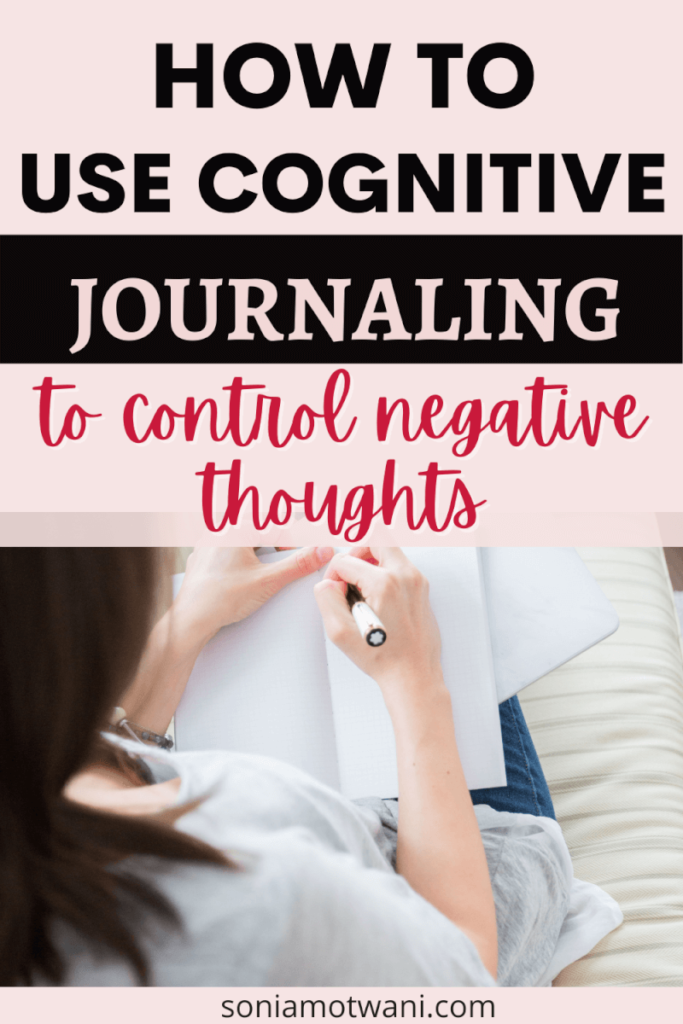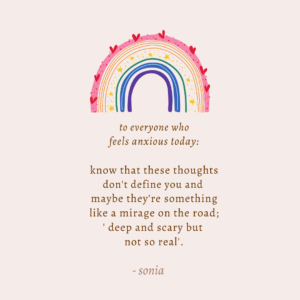Journaling for beginners, Journaling tips & techniques, mental health
Cognitive Journaling – The profound art of controlling negative thoughts
Do you know cognitive journaling can actually help you control negative emotions?
There are times when you’re all surrounded by negative thoughts and emotions and you have no way to help yourself out. I have had days when these negative thoughts curb me and I feel so helpless. You see. When it comes to highly sensitive people, we feel and think a lot and this is why we get into the spiral of thinking weird thoughts that might not be always real.

When you learn how to control your negative emotions, it’s not that you stop getting negative thoughts altogether. It means that you learn how to effectively manage your negative thought patterns and live with a positive mindset.
Controlling negative emotions means not letting these emotions overpower you in the case of failure. Failure is but a ladder to success, and it’s not just important to realize this truth but to identify the negative emotions that grip you when you face failure.
It can be as simple as being late to work one day and thus receiving a talking-to from your senior. The minute you are faced with a difficult situation, the trigger for the negative thought pattern goes off, and you are led to deal with your emotions overpower you.
How can you stop yourself from having a violent emotional outburst when confronted with such a situation? It’s natural you feel bad; who wouldn’t? But how do you go on about your day positively, taking it all in your stride? How do you control your emotional response to an adverse situation?
What are Cognitive distortions?
The first step to controlling your emotions is to identify any cognitive distortions. What are cognitive distortions? They are instances of viewing the situation in a distorted way, triggered by negative thought patterns.
Whether it’s the all-or-nothing thinking, maximization or minimization, or just an automated negative thought, the goal is to identify it and challenge it, then replace it with a positive thought.
What is CBT – Cognitive Behavioral Therapy?
That is mainly the scope of cognitive-behavioral therapy or CBT, a form of psychotherapy that treats problems and boosts happiness by modifying dysfunctional emotions, thoughts, or behaviors. In CBT, people learn to identify their own distorted thought patterns and replace them with happier, positive ones.
CBT is extremely beneficial to people because it teaches you to be your own therapist and rectify your negative thought patterns on your own. Based on this method of CBT, Dr. Richard Ragnarson, a doctor from Europe and a patient of cognitive-behavioral therapy himself, has developed a new technique of journaling called cognitive journaling.
The power of Journaling for negative thoughts:
Journaling is a great way to keep a record of memorable events in your life. However, the power of journaling goes beyond that. Cognitive journaling is a form of journaling that helps you practice cognitive reframing on a daily basis.
When you write your negative thoughts and emotions down on a piece of paper, it helps you recognize the distortions in your thought patterns and allows you to work on them by revisiting and reinterpreting them.
Related piece: How to start journaling for healing?
What is Cognitive Journaling?
When you write your negative emotions down in a journal to identify any distorted patterns in them that affect your mood and cause you to spiral, the method is called cognitive journaling.
In regular journaling, you simply write down what has happened to you in your journal. However, in the case of cognitive journaling, you write things down so that you can recognize and address any negative thought patterns in your behavior. You write about issues so that you can re-examine the way you are interpreting these issues and challenge the negative thoughts and emotions with positive ones.
Just like CBT has to be practiced on a daily basis for it to work out, cognitive journaling and reframing have to be practiced on a daily basis to yield beneficial results. Instead of simply writing down things in your journal, you need to revisit these events and re-interpret them, replacing the negative thoughts with positive ones.
Practicing cognitive journaling on a daily basis can help you identify negative thought patterns until you begin noticing them before they happen. This is a key step to preventing them from happening in the first place.
How to practice Cognitive Journaling?
Maintaining a journal on a regular basis can be a great way to stay mindful of your habitual negative thinking.
Your journal can be structured any way you want it to be, but when it comes to cognitive journaling, you would benefit from following the ABC pattern of cognition, because like CBT, journaling for negative emotions is, in the end, supposed to help you identify negative behavioral or thought patterns and replacing them with positive ones.
The ABC method:
According to Dr. Ragnarson, every life event can be divided into these 3 categories:
- An activating event (A) – The stressor. Any event or experience that gives rise to thought or emotions.
- Our belief (B) – Emotions, thoughts, and behavior about the event.
- Consequences (C) – Result of A + B
According to Dr. Ragnarson, every cognitive action follows the ABC model. However, sometimes we make our judgment or apply our beliefs so easily that we do not even realize doing it. As a result, the consequences seem like a direct result of the activating event or trigger.
For example, if you get a talking-to your boss due to being late to work, you feel you have messed up so bad that you start spiraling. Hence, the sequence looks like this:
Receive a talking to (A) > Spiralling (C)
However, we are missing one step here, and this is where cognitive journaling comes into play. When you are writing this event down in your journal later, you are forced to think about the missing belief part. What were your emotions following the event? How did the harsh reprimand from your boss make you feel? What was your automated negative thought?
This happens as soon as you start journaling about the incident, and you realize that the only reason you spiraled was that you felt a certain sense of hatred towards yourself, thinking that you always messed things up. This is a cognitive distortion called all or nothing thinking, where you tend to blame yourself for all your faults based on one act of wrongdoing.
Thus, the actual thought sequence was:
Receiving a talking-to (A) > Feeling a sense of self-loathing (B) > Spiralling (C)
Thus, you complete the chain of action, and the next time this happens to you, you remember to keep your sense of self-loathing in check to keep yourself from having an emotional outburst again.
Here’s how you can shift your limiting beliefs.
How to use Cognitive Journaling to control your negative thoughts? – Conclusion
Thus, cognitive journaling helps you identify your triggers and your negative thought patterns, and allows you to replace them with positive ones, thus changing the way you think to a more positive, healthier, and happier one. Journaling helps you revisit your actions and change your perspective about certain incidents, thus helping you get over your negative thinking.
It is important to keep journaling regularly for this process to work over the long term. Implement cognitive journaling as an integral part of your self-care routine, and enjoy a happier, stress-free life. I hope this helps you during times when it seems impossible to control your negative thoughts.
Pick your pen and open your journal, start this beautiful practice today itself, and if you need any support, we have an engaging community of journalers to keep you committed to this beautiful art.





Leave a Reply